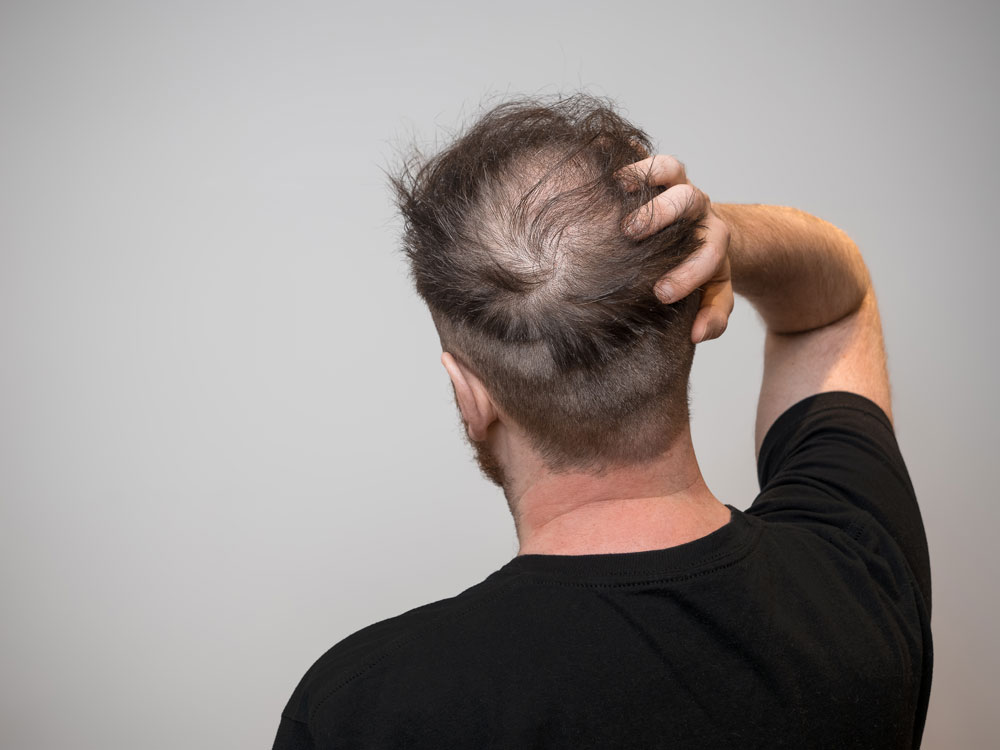It’s normal to lose some hair every day. Even those with the healthiest scalps shed about 50 to 100 hairs daily as part of the natural growth cycle. It only becomes a concern when you start noticing wider parts, thinning patches, or visible areas of the scalp where hair once grew thicker.
At Still Well Med Spa, we offer hair restoration treatments that can help address these early signs of thinning before they progress. Our techniques get to the root of the problem— the follicles. By promoting regenerative processes, we can help your body produce healthier strands again for thicker, fuller hair.
What Is Really Happening Beneath the Scalp?
Hair growth begins inside the follicle, a small pocket in the scalp where new strands are produced. Each follicle cycles through three phases: growth, transition, and rest. During the growth phase, cells at the base of the follicle divide rapidly, pushing older cells upward where they harden into the visible strand of hair. When that phase ends, the follicle temporarily stops producing new cells and gradually releases the hair shaft.
Shedding happens when the follicle reenters the growth cycle and pushes out the old strand to make room for a new one. The scalp contains thousands of follicles working independently, which is why hair loss can appear gradual rather than sudden. When the natural balance between growth and shedding is disrupted, more follicles enter the resting stage than the growth stage, leading to visible thinning and reduced density.
Common Causes and Types of Hair Loss
A follicle can stop producing hair when its natural growth cycle becomes disrupted by internal or external factors. Hormonal changes, particularly fluctuations in dihydrotestosterone (DHT), can cause follicles to shrink and produce finer strands until growth eventually stops. Genetics can influence how sensitive follicles are to these hormonal changes, which is why hereditary hair loss often follows a recognizable pattern. Inflammation within the scalp can also interfere with the follicle’s environment and limit the nutrients and oxygen needed for healthy production.
Different types of hair loss reflect different disruptions in follicle function. Androgenic alopecia, or pattern baldness, occurs when follicles gradually shorten their growth phase. Telogen effluvium involves a sudden shift where a large number of follicles enter the resting phase at once, often after illness or physical stress. Alopecia areata happens when the immune system mistakenly targets follicles, leading to patchy shedding.
Why Other Treatment Options May Fall Short
Some treatments can offer only temporary improvement or require constant maintenance that becomes difficult to keep up with. Topical solutions and oral medications depend on daily use to maintain results, and once stopped, shedding usually resumes. Options like hair transplants involve longer recovery times and can carry risks such as scarring or uneven growth. Certain therapies may focus only on stimulating existing strands without addressing the inactive follicles underneath. The most effective approach considers both the surface and underlying causes of thinning, targeting the scalp’s environment where new growth begins.
Using Your Body’s Healing Power With PRP
What Is PRP?
Platelet-rich plasma, or PRP, is a substance derived from a small sample of your blood. We isolate platelets that are naturally rich in growth factors. These concentrated platelets are then reintroduced into areas of the scalp where hair growth has slowed or thinned. PRP treatments restore healthy follicle activity rather than covering or disguising thinning hair.
How Platelets Stimulate Hair Growth
Platelets contain signaling proteins that influence cell repair and regeneration. When injected into the scalp, these growth factors can activate dormant follicles and encourage new cell production around the root. Increased blood flow and nutrient delivery follow and create conditions that help the follicle reenter the active growth phase. As these processes occur, hair strands can gradually regain thickness and strength.
Harnessing Regenerative Science With Purified Amniotic Fluid
What Is Purified Amniotic Fluid?
Purified amniotic fluid is a regenerative substance derived from the placenta. It contains naturally occurring growth factors, cytokines, and proteins that support cell repair and renewal. When processed for medical use, the fluid is filtered and purified to retain its active components.
How Amniotic Fluid Supports Tissue Regeneration
Amniotic fluid contains biological signals that encourage the body’s repair mechanisms to activate. When used as part of a hair restoration treatment, it can help stimulate follicles that have become dormant or sluggish. Growth factors within the fluid promote improved circulation, enhance nutrient delivery, and foster a healthier scalp environment that supports renewed follicle activity.
Is Purified Amniotic Fluid Ethically Sourced?
Amniotic fluid used for medical treatments is obtained only from voluntary, screened donors during planned cesarean deliveries. Collection occurs after the baby’s birth, and no harm comes to the mother or child. Donated fluid is then processed under strict medical and ethical standards to ensure purity and safety.
Who Is a Good Candidate for Hair Restoration Treatments?
People experiencing gradual thinning, widening parts, or shedding that seems more than usual may benefit from modern hair restoration therapies. Those in the early to moderate stages of hair loss tend to respond best because the follicles are still present and can often be reactivated. Scalp health and overall wellness also influence how the follicles respond to stimulation. Anyone considering treatment should have realistic expectations and a professional evaluation to determine which approach best supports their goals.
Supporting Hair Regrowth Through Good Lifestyle Habits
Healthy hair growth depends on more than scalp treatments alone. A balanced diet rich in protein, iron, and essential nutrients supports follicle function and strand strength. Take care of your body and your scalp by managing stress, maintaining regular sleep patterns, and avoiding harsh styling or heat exposure. Be sure to also stay hydrated and protect your scalp from UV damage to encourage stronger growth cycles and better long-term outcomes.
Showing Signs of Hair Loss? Schedule a Consultation for Hair Restoration on Staten Island, NY
Hair restoration treatments at Still Well Med Spa combine regenerative science with medical expertise to help reactivate follicles and support healthier scalp function. Our approach focuses on stimulating the body’s own repair mechanisms to encourage lasting growth. Located on Staten Island, we provide modern therapies that can help reduce shedding and improve density using your body’s natural biology. To learn more or schedule a consultation, call (718) 448-6373 or contact us through our online form.






